All the Statistics You Need About How Kids Use the Internet in 2025

Digital natives.
No doubt you’ve heard the term before. It’s used, somewhat optimistically, to refer to people born at some point after the mid-1990s, and who grew up with ready access to modern computer and internet technology throughout their lives.
But the phrase belies a much richer and more complicated picture. Kids these days (there, I said it) use and enjoy the internet in a myriad of different ways.
This article is a deep dive into global trends and statistics about how kids use the internet today. Hopefully, it’ll challenge the assumptions behind the all too broad digital natives label, and show off the rich diversity and the wealth of opportunities that kids benefit from every day when they go online.
Internet Access Globally Amongst Children and Young Adults
The first big issue that the digital natives label completely glosses over is that the assumption that everybody under the age of 21 has been using computer technology their entire lives is way off the mark.
Globally, two-thirds of children and young people under the age of 25 do not have an internet connection at home.
This figure comes from a recent joint report by international children’s charity UNICEF and the International Telecommunication Union (ITU), which represents the communications industry and stakeholders.
For children in low-income countries, access to the internet is even worse – only 6% of under 25s in low-income countries and 15% of kids in lower-middle-income countries have an at-home internet connection.
Kids in West and Central Africa are the least connected, with only 5% accessing the internet at home.
In Eastern and Southern Africa, and in South Asia, only 13% of under 25s have a home internet connection. It’s a little better in the Middle East and North Africa at 26%, but still below the global average and well below the access rate for kids in higher-income countries.
An earlier UNICEF report, Global Kids Online, surveyed kids and their parents in 11 countries across four continents:
- Ghana
- South Africa
- The Philippines
- Albania
- Bulgaria
- Italy
- Montenegro
- Argentina
- Brazil
- Chile
- Uruguay
These countries were selected because of the wealth of survey data from each one that was available for the report.
This shows an opportunity for education to provide internet access, especially in low-income countries where so few young people have an internet connection in their homes.
The results of this survey are somewhat at odds with the data from the more recent UNICEF/ITU report, especially in terms of how many kids access the internet at home. But this is because of a subtle difference in terminology.
There’s a big difference between “using the internet” and “having an internet connection at home.”
Kids who use the internet at home – especially in low-income countries where there are fewer home internet connections – are likely to use a phone with mobile data.
But either way you look at it, the trend remains the same: if you are a child in a lower-income country, then you are less likely to have access to or access the internet than if you live in a higher-income country.
A recent report by Common Sense Media – which they believe is the only nationally representative survey that tracks media usage in a totally random sample of 8 to 18-year-olds in the US – found that even in the world’s richest country, not everybody has the same access to the internet.
The report also found that, at least in the United States, digital inequity follows the patterns of socio-economic status. 94% of children in higher-income households in the US have at least one computer at home, compared to just 67% of children in lower-income households.
There was also a statistically significant divide between racial backgrounds: 91% of white children have at least one computer at home, compared to 81% of black children and 83% of Hispanic children.
How Children Use the Internet in 2022
In 2021, the Securelist research team used anonymous user data from the Kaspersky Safe Kids parental control app† to dig out rich information on how kids were actually using the internet in late 2020 and early 2021.
The nature of this software allowed for tons of in-depth insights into kids’ actual online experiences because it captures the type of content viewed as well as how much the kids used individual apps.
This chart shows the most popular search categories for kids, with entertainment and socializing taking center stage.
Videos, audio, and software account for nearly half of kids’ searches on the internet. So it makes sense that YouTube is by far the most popular app used by children as well.
TikTok is used by 13% of 12 to 15-year-olds, and this number is shooting up. It was only used by 8% of people in this age group in 2018.
But YouTube remains the firm favorite for kids. Children between 5 and 15 years of age are more likely to pick YouTube as their platform of choice over on-demand giants like Netflix and the BBC.
Overall, kids are spending more time on screen-based entertainment now than ever.
The Common Sense Media report found that 8 to 18-year-olds are spending much more time on on-screen entertainment now than they were seven years ago. This trend rose even more sharply after the start of the COVID-19 pandemic.
Between the start of the pandemic and now, Common Sense Media found that American kids spend about an hour more per day using screens for entertainment (this includes offline entertainment like television).
Their category breakdown shows that reading online and content creation are relatively popular, in addition to the categories identified in the Securelist report.
Again, watching videos comes out on top.
How Children Use the Internet to Watch Videos
Watching videos online takes up more of kids’ internet and screen time than any other activity.
As the biggest and best-known depository for clips and videos on the internet, YouTube inevitably receives a hefty share of this traffic.
YouTube’s dominant position among the most popular apps for kids is cemented worldwide, clearly.
And Kenya stands out as the country where YouTube is most popular, with kids there spending more time on the app than on any of the other top 10 apps combined.
This data is from the Global Kids Online survey. It tallies up with the data on how much kids access the internet weekly, and shows how popular online videos are for kids – including TikTok and some more media other than YouTube.
In Europe, many kids of all age groups watch videos online every day.
The European Kids Online report found that, on average, 54% of kids aged 9 to 11 in Europe watch videos daily, rising to 72% of 12 to 14-year-olds and 76% of 15 to 16-year-olds.
The number of 9 to 11-year-olds who watch videos on the internet daily ranges from around 30% (in France and Germany) to 73% (in Estonia). In half of all European countries, however, more than half of the children aged 9 to 11 watch videos online every day.
How Children Use the Internet to Communicate
Using the internet to communicate is the second most popular activity for kids, after YouTube and other video content.
By far, WhatsApp is the most popular communication tool†. But TikTok, Instagram, and Snapchat still get a lot of use among kids and teens.
Italian children communicate on WhatsApp much more often than children in other countries.
TikTok is getting really popular around the world, especially in Europe, Australia, and Brazil.
And Instagram and Snapchat still get a lot of daily use, despite being pretty much ancient history as far as kids’ social media apps go these days.
Children in Spain, who spent the most time on TikTok, also spent the most time on Instagram, with 9.05%.
Instagram was nearly equally popular among children in Canada (8.98%). Children in Germany (3.32%), Kazakhstan (3.32%), and Kenya (2.4%) spent comparatively little time scrolling through Instagram feeds and stories.
In countries where Snapchat was one of the most popular apps, French children spent the most time on it, with 12.24%, while German children spent the least time on it, at 2.43%.
Facebook is far from the favorite social network among children. Nevertheless, Facebook enjoys some popularity among children in Egypt (10.08%), Mexico (5.9%), and India (2.87%).
Facebook did not make the list of the 10 most popular apps for kids in any of the other countries where we have data.
These findings from the EU Kids Online report show clearly that in most of the world, kids tend to use social media apps more often as they get older and become teenagers.
But there are some pretty significant differences between countries.
For example, kids aged 12 to 14 in Spain are more than twice as likely to use social media every day than their 9 to 11-year-old siblings and peers, but this number doesn’t increase as much for kids aged 15 to 16.
Kids in Finland were the least likely to use social media every day, with only 10% of 12 to 14-year-olds and 21% of 15 to 16-year-olds using it. (There was not enough data available for the younger age group in Finland.)
The Common Sense Media report also found that 8 to 12-year-olds in the US are using social media now more than ever.
Children and Gaming
We all know that kids love video games – kids of all ages that is!
The Securelist data† doesn’t tell us how much time kids spend on Steam or Xbox Live. But it does give an indication of how much time kids spend on game websites, out of the total amount of time they send on the internet in each country.
Kids in Kazakhstan spend more time on gaming websites than in any other country in Securelist’s data, at 26.01% over a quarter of their time online.
Australia (15.37%), Canada (14.33%) and Kenya (14.42%) also saw a fairly sizeable chunk of kids’ internet time being devoted to gaming sites.
The Securelist data also gives us some insights into the kinds of gaming related topics that kids search for online.
Most often, and in all languages, children searched for names of bloggers or names of channels that publish content related to video games.
Nearly half of the searches Securelist analyzed were for this kind of content, which includes some of the biggest names on YouTube.
This data from the Unicef report shows that teenagers tend to spend a little less time gaming than younger kids, in most countries. Montenegro and South Africa are the only countries that buck the trend, with more 15 to 17-year-olds gaming every week than younger age groups.
I looked into gender differences in kids’ internet use in the different reports and datasets I worked with for this article. In nearly every instance, there was no statistically relevant difference.
But in gaming, this isn’t the case.
The Unicef report found a fairly significant difference between boys and girls in terms of how many frequently play video games.
Boys are much more likely than girls to game every week, in every country that I found data for.
The data from the EU Kids Online report is in agreement: boys are much more likely to play games every week than girls.
How Children Use the Internet for Education
In my opinion, access to information and education is the greatest benefit that the internet provides to society.
Today, everybody in the world with open internet access can find out pretty much anything about pretty much any topic. There are heaps of free learning resources, there’s Wikipedia, and there are thousands of communities dedicated to helping people learn.
And with the COVID-19 pandemic and the switch to remote learning for kids all over the world, using the internet for education has become even more important.
This data from the Global Kids Online report shows that kids are more likely to use the internet for information as they get older.
This could be attributed to different teaching styles at school in higher grades, as students are asked to do more independent study and research. Search skills, awareness, and curiosity are also all likely factors too.
The EU Kids Online report paints the same picture locally in Europe, with the question worded more specifically around using the internet for schoolwork (rather than any kind of information seeking).
Children in Poland have the biggest step change between year groups of any other country in this data. Only 11% of 9 to 11-year-olds and 12% of 12 to 14-year-olds use the internet at least once a week for schoolwork. But this shoots up to 34% of 15 to 16-year-olds.
Children and e-Commerce
Most parents I know will be pleased to find out that e-commerce is fairly low on the list of priorities for kids on the internet, according to Securelist’s data.
The Securelist team found that, on average, kids only spend 11.5% of their time online on e-commerce sites†.
The leaders by share of visits to online stores were children in Germany (19.51%), the UAE (17.22%), and Canada (15.86%). The lowest figure was recorded in Kazakhstan (4.6%) and Egypt (5.18%).
The Securelist team also broke down their results into world regions. CIS (Commonwealth of Independent States) includes Russia, Belarus (which most researchers include in Europe), as well as central Asian countries that were formerly part of the Soviet Union. They also use the somewhat ambiguous term “Arab World”. There is no globally recognized definition of this term, but presumably, they are referring here to the 22 member states of the Arab League — also sometimes called the “MENA” region.
Perhaps unsurprisingly, kids spend more time on e-commerce sites in regions that include more high-income countries.
Cyberbullying
For the most part, I think the internet is a great opportunity for kids, adults, and society as a whole.
Shopping, gaming, education, socializing, and entertainment can all be worthwhile and they are valid reasons to use the internet at any age. In many ways, they can also be extremely rewarding.
But the internet still comes with its risks, and cyberbullying is a fairly common one.
Ditch the Label, an anti-bullying organization, surveyed kids who had been cyberbullied and asked them what issues had been brought on by their experience of cyberbullying.
The results are sobering.
Around a quarter of kids who had been bullied online stopped using social media, had suicidal thoughts, and/or engaged in self-harm as a result of the bullying.
IPSOS research recently examined which countries have the highest rates of cyberbullying, by asking parents if their children had experienced cyberbullying.
Parents in India are most likely to say that their child has been cyberbullied, at 37%.
No parents in Russia said their child had been cyberbullied when asked. When IPSOS asked the same questions in 2016, 9% of parents in Russia said their child had been cyberbullied (the global average remained the same at 17% in both years).
The EU Kids Online report asked kids who had been a victim of cyberbullying recently how they felt about it. They gave four options: “I was very upset,” “I was fairly upset,” “I was a little upset,” and “I was not upset.”
Most of the children asked (79%) were at least a little upset as a result of being cyberbullied.
The Cyberbullying Research Center asked kids what they think works as a way to stop cyberbullying. These stats can give parents, teachers, and kids themselves a good starting off point for dealing with a cyberbullying issue.
(If you’re looking for more information, stats, and practical help to deal with cyberbullying, head over to my Comprehensive Guide to Cyberbullying.)
The most effective ways to tackle cyberbullying, according to kids themselves, are simply blocking and ignoring the bully.
Telling parents and switching off the computer are also recommended, while hardly any kids thought that calling the cops would help.
A Few Final Words
These statistics clearly indicate that youngsters employ the internet in a diverse range of manners, driven by various motivations, yielding varied outcomes.
Entertainment and socializing are the internet’s biggest draws for kids today, but lots of extra value comes from educational activities online, content creation, and even e-reading.
The COVID-19 pandemic sharply increased an already pretty steep curve in terms of kids spending more time than ever online and on screens. This isn’t likely to abate any time soon.
Let’s celebrate the internet’s potential for a positive impact on all of us at any age: digital natives and newcomers alike!
Sources:
- The Annual Bullying Survey – Ditch the Label
- The Common Sense Census: Media Use by Tweens and Teens – Common Sense Media
- Kids on the Web in 2021: Infinite creativity – Securelist†
- Global Kids Online – UNICEF
- EU Kids Online – LSE
- Teens Talk: What Works to Stop Cyberbullying – Cyberbullying Research Center
- Two thirds of the world’s school-age children have no internet access at home, new UNICEF-ITU report says – UNICEF
† The data in this study come from users of Kaspersky Safe Kids, which is a parental control app. As these data points only come from users of this service, we are hesitant to say that they are representative of kids as a whole.

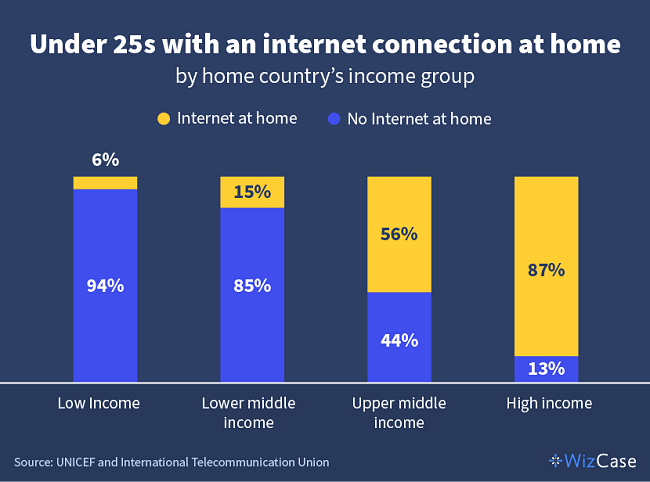
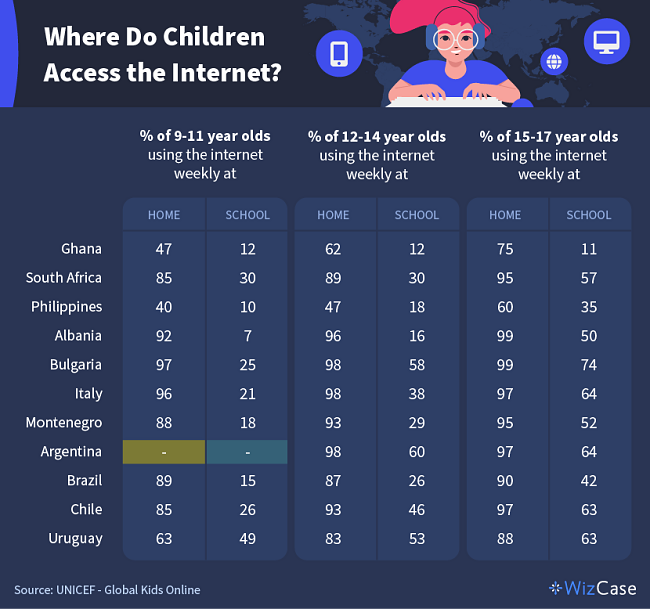
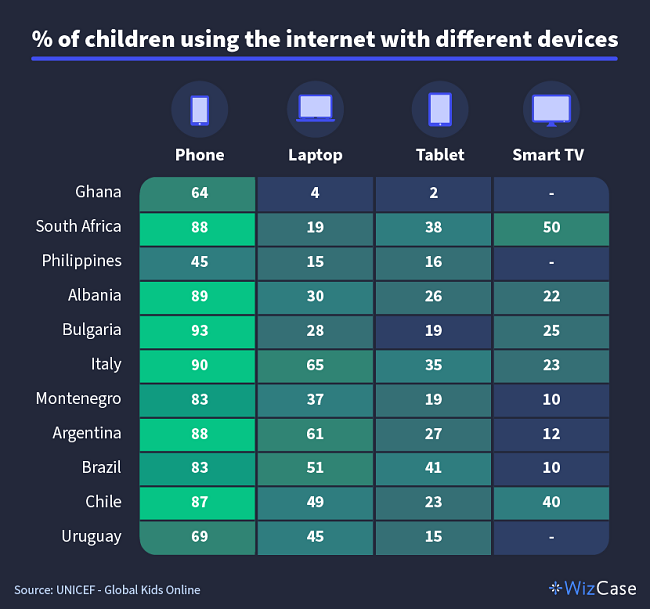
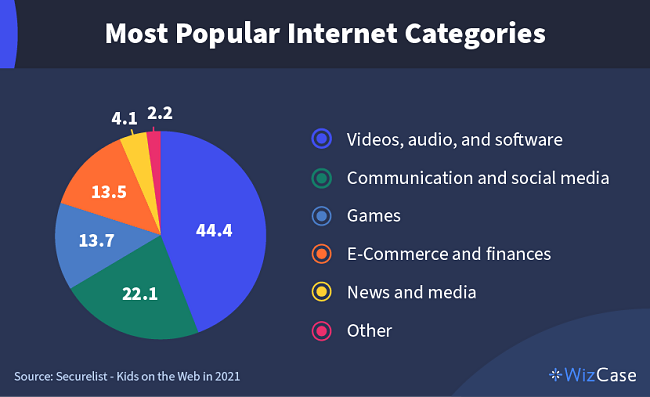
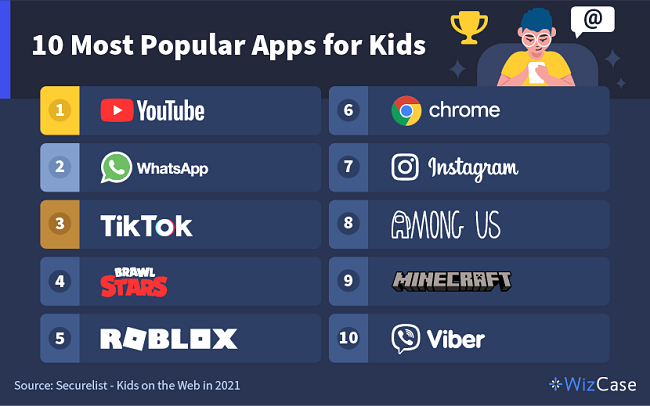
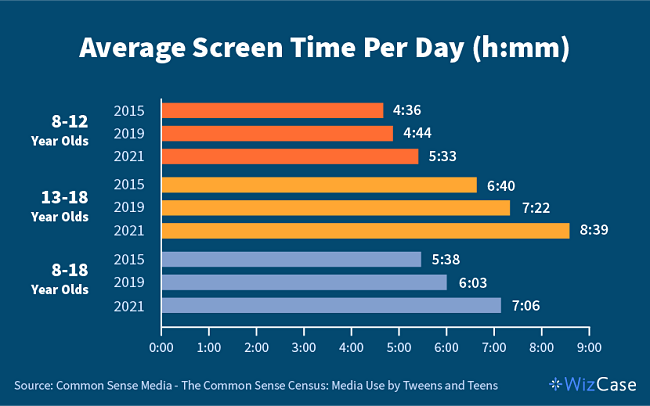
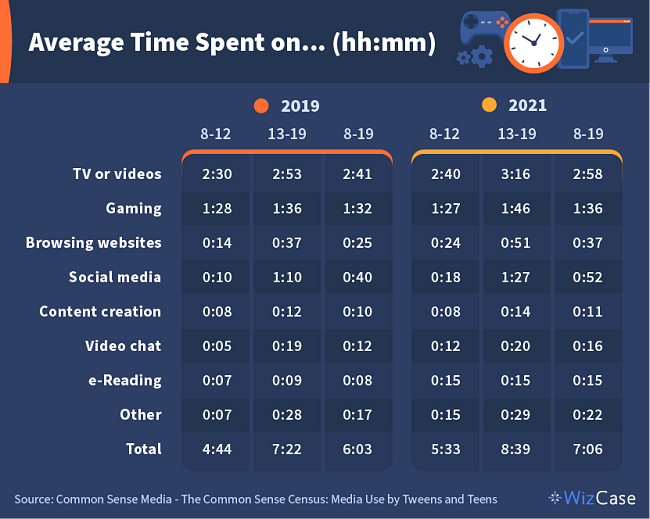
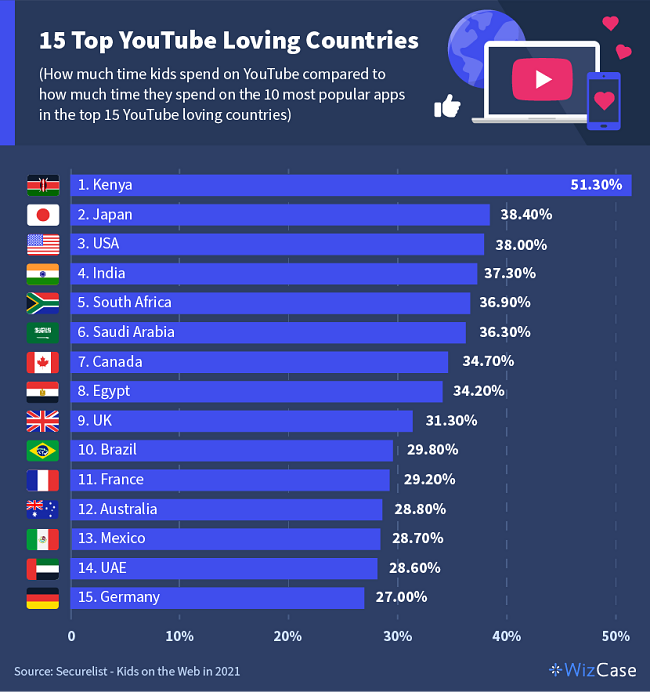
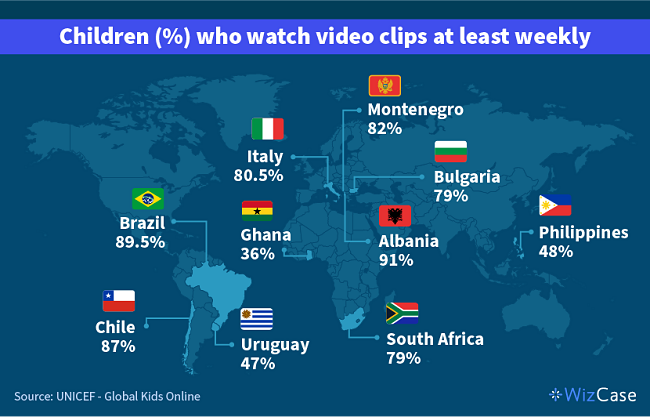
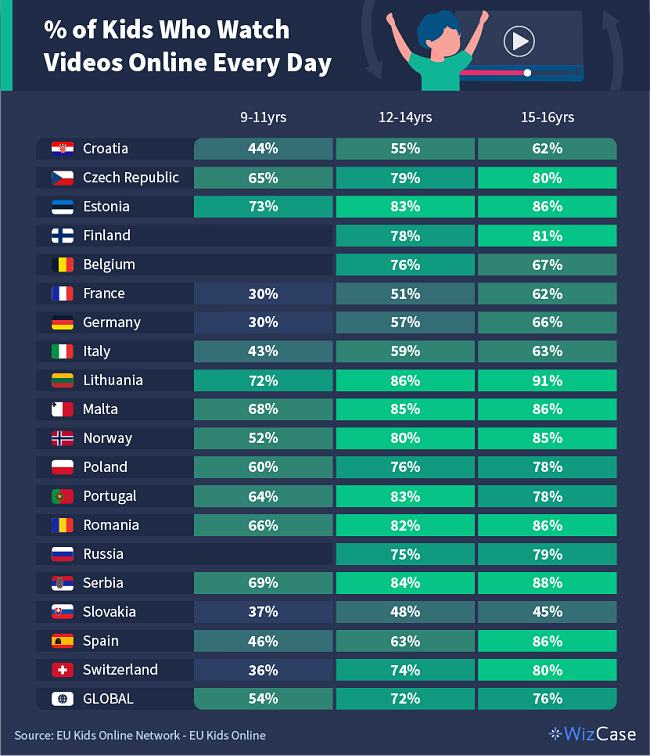
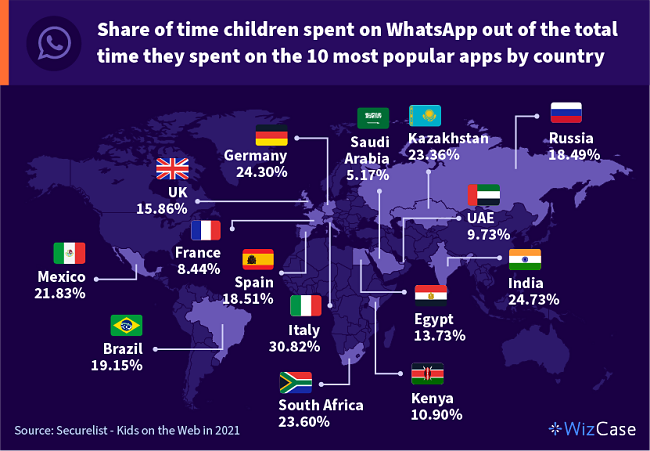
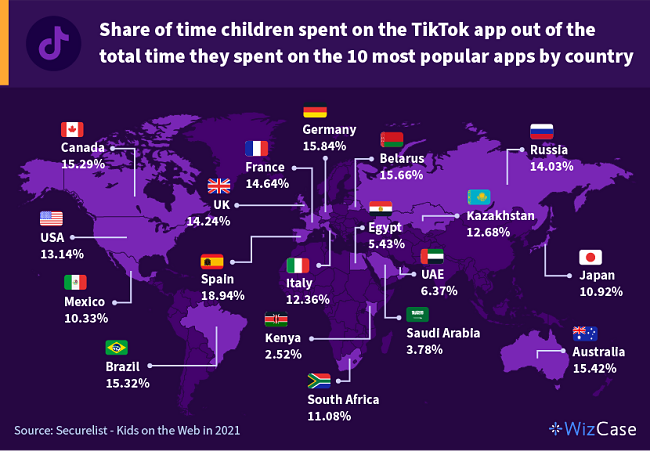
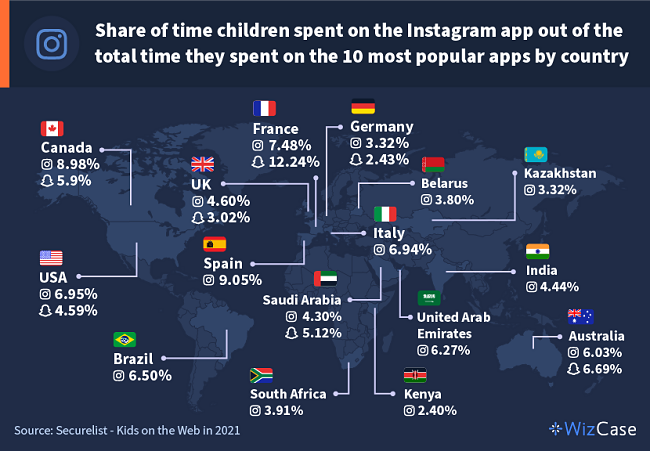
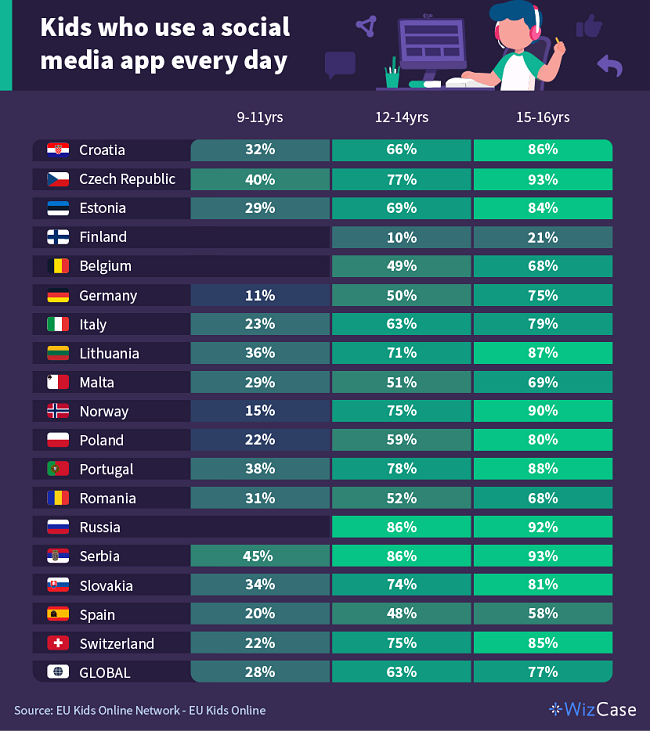
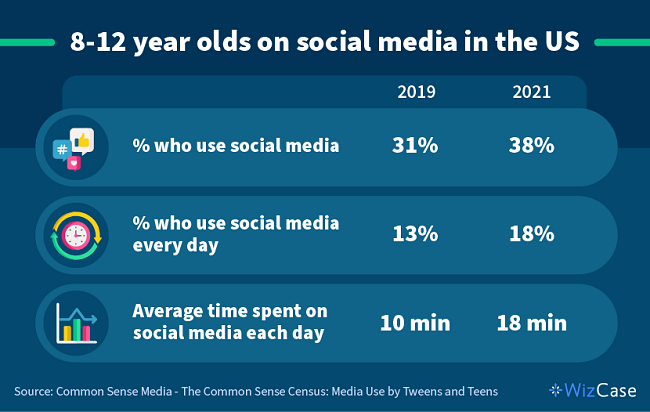
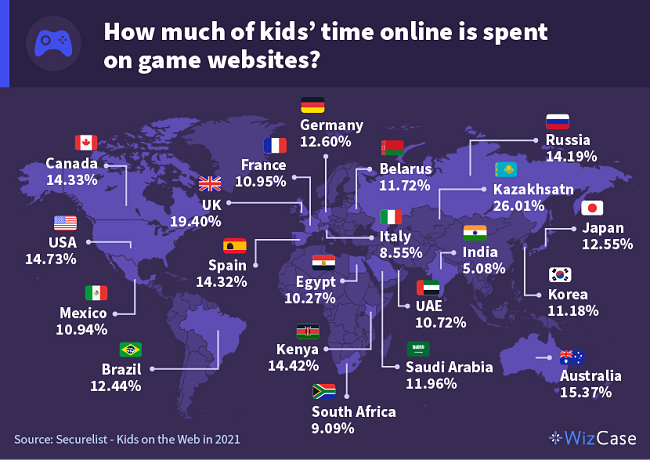
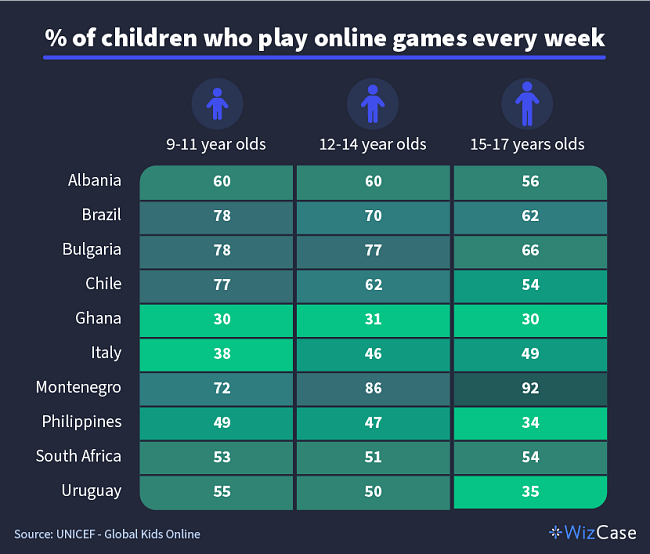
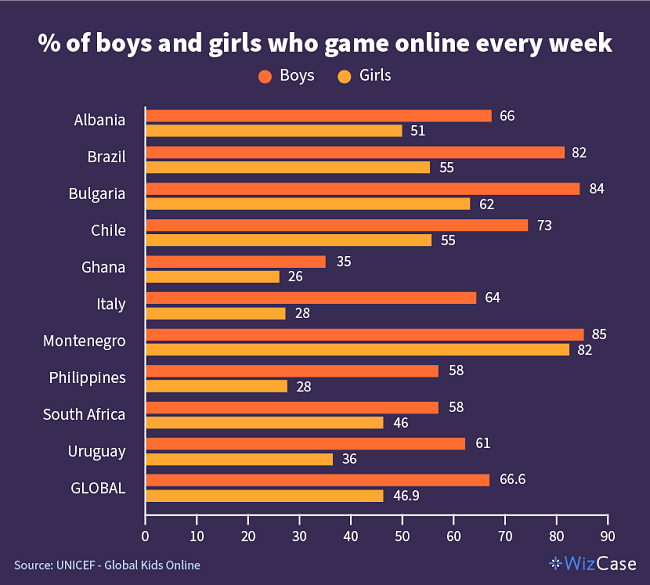
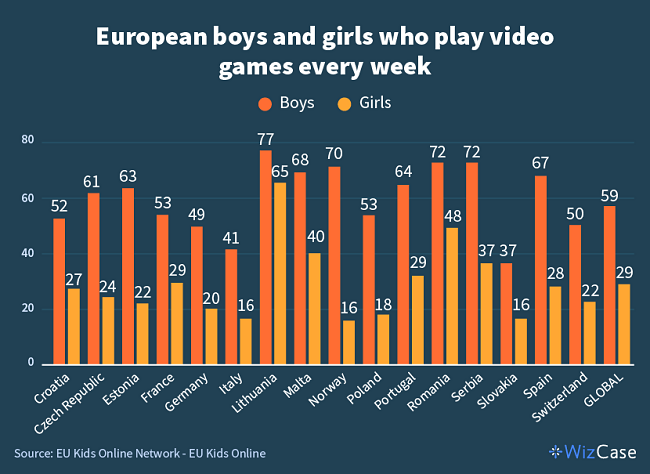
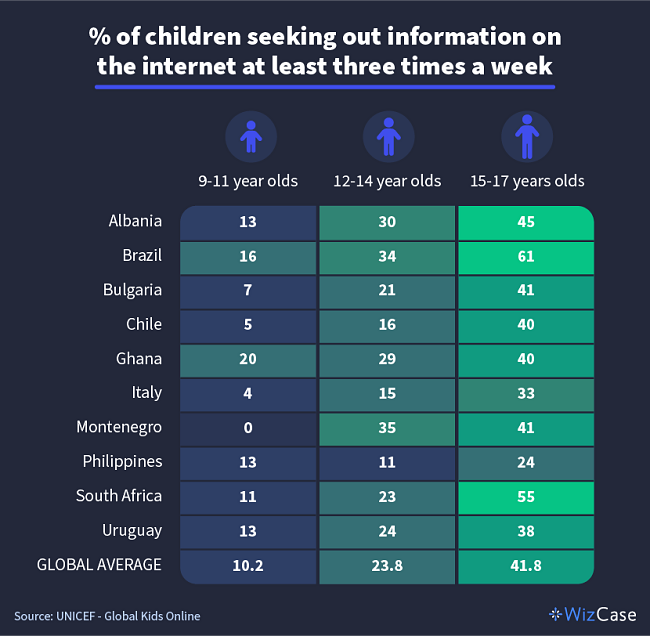
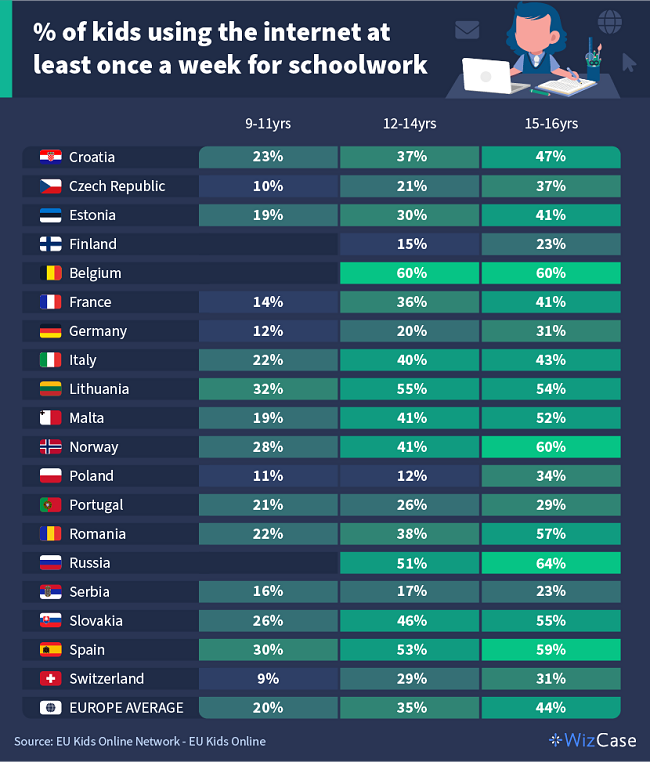
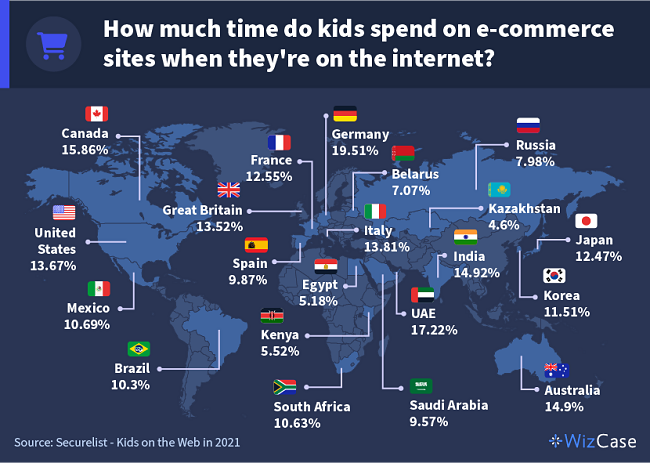
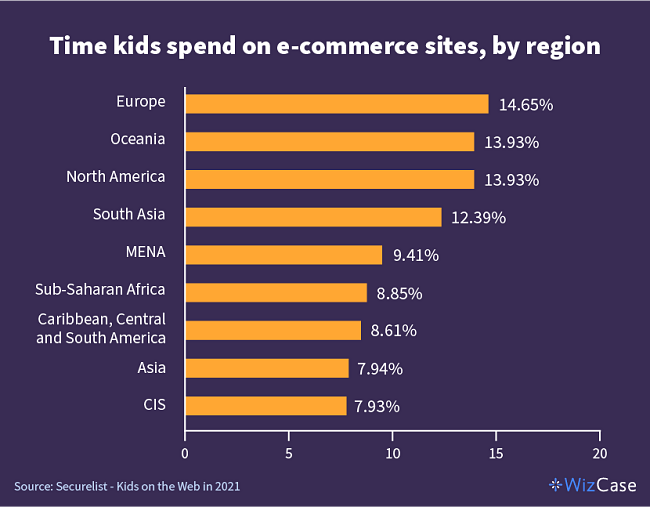
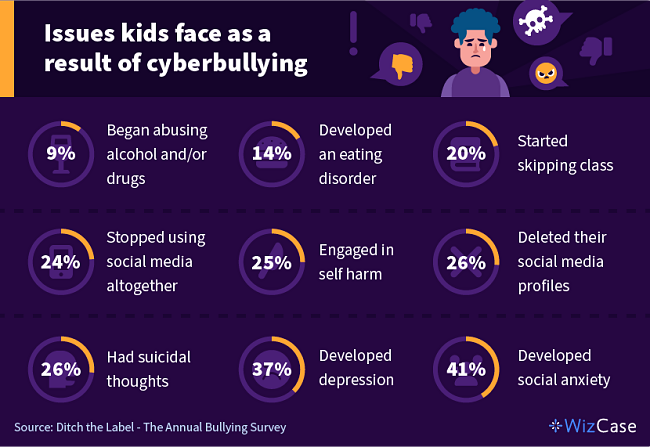
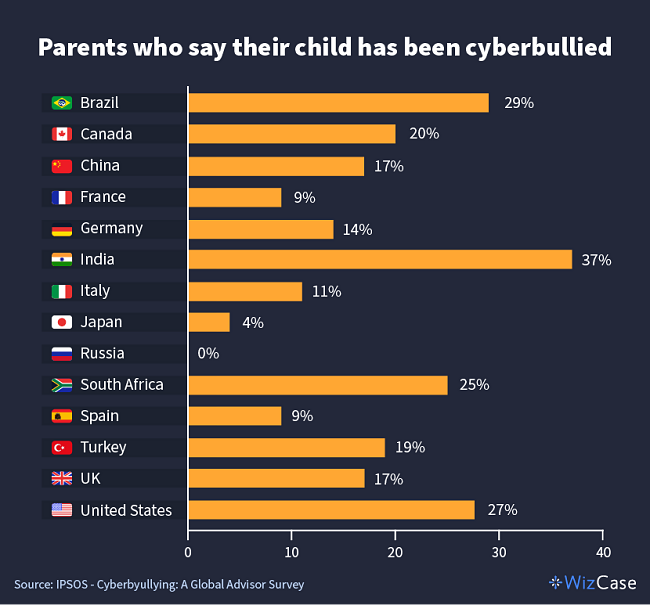
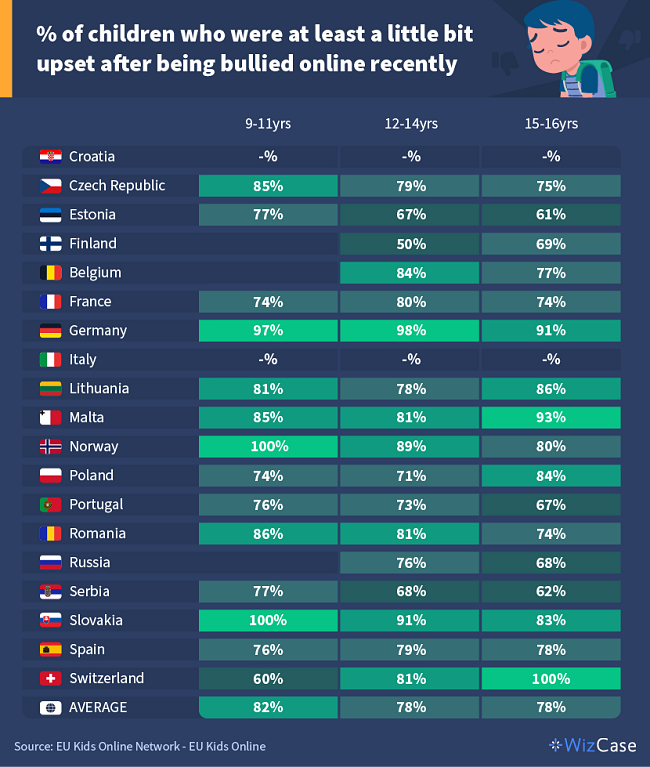
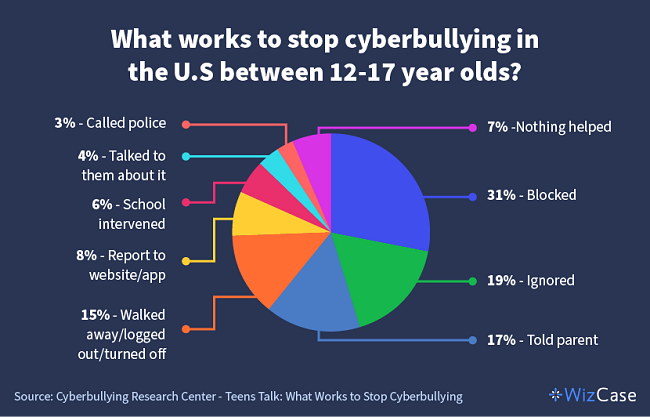



Leave a Comment
Cancel